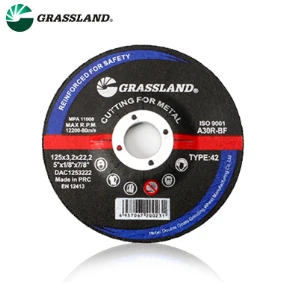Understanding Metal Cutting Discs for Circular Saws
Metal cutting discs for circular saws are essential tools for professionals in construction, fabrication, and metalworking industries. These discs, often referred to as blades or wheels, are specifically designed to cut through various types of metals with precision and efficiency. With the increasing demand for metal cutting in numerous applications, it is crucial to understand the different types of discs available, their specifications, and guidelines for proper usage.
Types of Metal Cutting Discs
The primary types of metal cutting discs include abrasive discs, diamond blades, and carbide-tipped blades.
1. Abrasive Discs These are the most commonly used metal cutting discs. They are made from a composite of abrasive materials, often aluminum oxide or silicon carbide, bonded together to create a thin, circular shape. Abrasive discs are effective for cutting softer metals like aluminum and can also handle some harder materials, albeit with decreased efficiency.
2. Diamond Blades For those who require cutting performance on harder metals such as stainless steel or cast iron, diamond blades are the ideal choice. These blades have diamonds embedded within their surface, allowing for faster and cleaner cuts. While they tend to be more expensive than abrasive discs, their longevity and cutting speed often justify the cost for heavy-duty applications.
3. Carbide-Tipped Blades These blades feature carbide teeth, which are excellent for cutting a variety of materials, including thick metal sheets. They provide superior durability and the ability to withstand higher temperatures compared to their abrasive counterparts. Carbide-tipped blades are most suitable for high-volume cutting in industrial applications.
Choosing the Right Disc
When selecting a metal cutting disc for your circular saw, several factors must be considered
- Material Type Identify the type of metal you will be cutting. Softer metals may only require an abrasive disc, while harder materials may necessitate a diamond blade.
- Thickness of Material Thicker materials generally require more robust and specifically designed discs to ensure efficient cutting without damage or excessive wear
.metal cutting disc for circular saw

- Saw Compatibility Ensure that the disc fits your circular saw's specifications. Check the diameter, arbor size, and maximum RPM to prevent accidents or damage to the saw.
- Cutting Speed Different discs have varying cutting speeds. Ensure that the selected disc matches the speed of your saw to achieve optimal performance and safety.
Safety Precautions
Cutting metal can be hazardous, and safety should always be a priority. Here are some essential safety tips
1. Always Wear Protective Gear Use safety goggles, gloves, and hearing protection to safeguard against flying metal shards and noise.
2. Follow Manufacturer Instructions Always adhere to the instructions provided by the disc manufacturer regarding usage, RPM limits, and compatibility.
3. Inspect Discs Regularly Check for cracks, chips, or any signs of wear and tear before each use. A damaged disc can shatter during operation, posing severe risks.
4. Secure Workpieces Ensure that the metal being cut is firmly secured in place to prevent movement, which could lead to inaccurate cuts or injury.
Conclusion
Metal cutting discs for circular saws are indispensable tools in various industries, providing the means to efficiently shape and fabricate metal materials. By understanding the types of discs available, making informed choices based on material and application, and adhering to safety practices, users can maximize their cutting efficiency while ensuring a safe working environment. Whether you're a seasoned professional or a DIY enthusiast, investing in the right metal cutting disc is pivotal to achieving outstanding results in your projects.
Post time:Dec - 15 - 2024

















